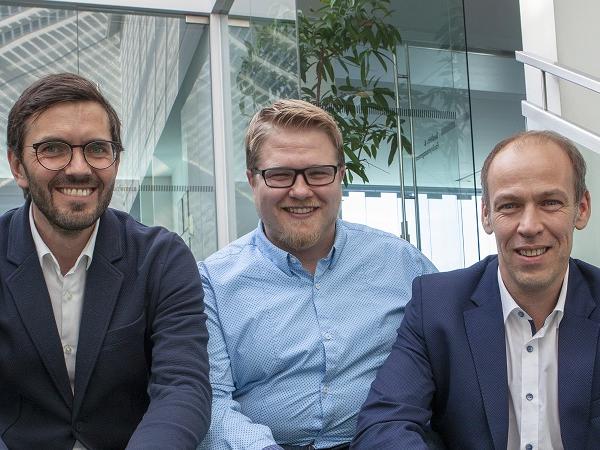
Date: 21 May 2019
Glas Marte is unique in the industry. The company from Bregenz in Vorarlberg not only delivers solutions made from glass for interior and exterior areas, it also develops and produces its own patented glass railing and sliding and holding systems. A unique selling proposition that works exceptionally well – but that also brings its process-related challenges.
Glas Marte was established in 1930 as a joinery / glazing workshop, and today has 360 employees at two sites in western Austria. The seed capital in the founding year is described on the website as follows: “specialist expertise, the willingness to work hard and only the most essential tools of the trade”. It appears that this capital has become part of the Marte DNA.
With regards to the tools – at IT level – a decision was required. The internal processes at Glas Marte, from quotation through to delivery, are complex and multifarious – due in part to the product diversity and also the fact that the company offers products from its glass production, as well as solutions in metalworking and metal processing.
Furthermore, it is necessary to coordinate the processes and production in two factories: Glas Marte in Bregenz and Itter in Tyrol, which was acquired in 2015. Previously, the company had around 20 individual programs and self-programmed solutions in use (CRM, bookkeeping, stock, project management, document management, time recording, customs programs, etc.). However, consolidation was lacking.
For the first time now, LiSEC – working together with Asseco Solutions from St Florian, Austria – has developed a concept in which all applications are considered, although these are no longer discernible as individual applications. In other words, this is a solution cast from a single mould rather than a network.
With this solution, LiSEC applications take care of the glass-specific applications and data. The kick-off event took place in March, commissioning is planned for January 2020 and the solution is set to go live in March 2020.

The benefits of this unique solution:
- A homogeneous system that covers all business areas (glass, systems and services) – no interface issues
- Consistent processes, starting with quotation management, through glass and metal production, right to delivery and billing.
- Low error rate (error types: Typing errors, transposed digits, incorrect item information, errors with manual transfers, manual synchronisation)
- Uniform stock organisation for glass and metal goods
- A data haven in a single system (prices can be uniformly calculated at the touch of a button)
"Glas Marte spans the range of business areas comprising glass, systems and services together with Lisec and Asseco. This concept allows the user to work in a single environment. Jumping between different systems and external interfaces is a thing of the past. With this, Glas Marte is taking a decisive step and strengthening its position on the market." MARKUS FISCHER, HEAD OF SALES SOFTWARE / LISEC
SHORT INTERVIEW WITH MARKUS WEISKOPF, CEO GLAS MARTE
LiSEC: Why did you choose LiSEC? Glas Marte was an A+W customer for 30 years – why the change?
Weiskopf: When making a decision of this significance, LiSEC is a safer option for us: An Austrian company under private ownership that does not belong to an investment fund. That offers investment security.
LiSEC has the competence and expertise in the area of system construction in glass processing and in the software sector – this combination is unique. Furthermore, the company impresses with its operator know-how: LiSEC continues to process flat glass in-house. This means the teams are familiar with our “pain points”, because they encounter them too – we are therefore on a level with each other.
From a technical perspective, LiSEC appears more modern and lively – an installation from LiSEC is the best you can get on the market. What is more, the site in Itter was already using a LiSEC software solution that worked outstandingly well – so why change the system?
LiSEC: How did the development process look? What triggered the decision?
Weiskopf: Internal processes were becoming more complex and work with different system was increasingly complicated. The essential transparency was missing. The more we expanded existing applications, the more sensitive they became – crashes, failures, etc., were more and more frequent. Additionally, signals were coming from the market: Our capacity planning started to suffer and we were jeopardising our delivery punctuality. And we were also receiving clear signals from the staff internally: The blend of different systems was very slow and complicated. The employees at Glas Marte will soon have a tool that will really ease their work, and they’ll have access to checking logics and restrictions that will reduce data-entry errors.
"We took a good look at the market and examined various solutions – only LiSEC was able to deal with this complexity." MARKUS WEISKOPF, CEO GLAS MARTE
LiSEC: What advantages do you anticipate? At what point will you deem the project a success?
Weiskopf: The most important factor for us is customer satisfaction, and the areas of speed and delivery punctuality are particularly focal here. We wish to significantly optimise these aspects to achieve high levels of customer satisfaction. In this regard, the transparency of orders is very important to us – if unavoidable postponements should arise, we want to be able to inform the customer promptly so that they can react accordingly.
We also want to strengthen our appeal as an employer brand through the modern tool and state-of-the-art IT solutions that we use, and offer our employees an attractive environment on a long-term basis.

 600450
600450























Add new comment